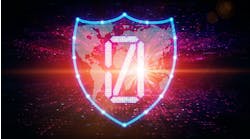Line powering is a way to power remote equipment from a central location using existing cable pairs in the copper network. It is an alternative to commercial power which can be expensive and sometimes it is unavailable.
This is not something new. Line power has been used as far back as the early 1960s by Telcos for T1 power and then HDSL powering and more recent DSLAM powering.
Today there are a plethora of applications such as fiber-to-the-node (FTTN), distributed antenna systems (DAS), and remote unit powering among other applications including FTTH for many independent Telephone companies.
Following is one company’s applications and their concerns on using line powering.
Our company has started deploying VDLS2 DSLAMs as part of the Connect America Fund (CAF-II) program. We are deploying the DSLAMs within 10,000 feet of the customers to ensure we get the 10Mb/1Mb bandwidth requirement defined by the FCC. Because we’re serving rural markets, we usually have no more than 4-8 DSLAMs per exchange. But even that number has created lots of logistics concerns, especially getting power to each site.
So instead of coordinating with various electrical utilities, we decided to utilize our vacant copper cables to deliver power to the DSLAMs. The power comes from the 48Vdc plant in our CO. The line power equipment we install in the CO consists of a shelf of modular up-converters, which are DC-DC converters that take the 48Vdc up to ±190Vdc. The shelves connect to the horizontal side of the MDF, then we jumper to the vertical whenever we have a service requirement. All the DSLAMs have built-in down-converters (±190Vdc to 48Vdc), so we just have to terminate our Line Power cable pairs at the DSLAM to get power. For line power, we use the Cordex HP LPS36 manufactured by Alpha Technologies.
This solution is ideal for the CAF program. We reuse the copper cable pairs that were replaced by fiber that serves the DSLAMs. We avoid having to coordinate with utility power companies, so we control our installations and turn-ups. Since there are no batteries at the DSLAM, our maintenance costs go down. And, best of all, the remote line power solution is less expensive than commercial power and all the equipment and cabinets required to make it work.
QUESTIONS & CONCERNS
My question involves the cables and which ones can be used for line power. Most of the time, we are using plastic insulated conductor (PIC) cables but sometimes we have to use pulp or paper insulated conductors. Are there any concerns with using these cable types? Are there any special tests we need to perform to make sure they will work?
ANSWERS & TESTS
First, the copper infrastructure and cable pairs. The power pairs must withstand higher voltages up to ±190Vdc. In all cases, potential power pairs should be Megger tested by applying a high voltage of at least 500 VDC Tip to Ring. This test will test the insulation resistance of the potential power pairs.
Longitudinal wrapped paper insulation was used from the late 1800s until 1910. I doubt if any exists. Spiral wrapped paper was used from 1910 to 1930. It has a high dielectric strength of the paper insulation that is greater than 500 VDC, and is ideal insulation for power pairs as long as it is under air pressure.
Pulp cable manufacture started in the early 1930s, and the insulation was tested to withstand DC voltages up to 500 VDC. The voltage was applied first to that pair and then against all other pairs in the cable.
With exception, pulp and paper insulated cables are kept under air pressure.
Plastic Insulated Conductors (PIC) insulation is tested during the manufacturing process with a minimum of 2,200 VDC in 26 Ga cables, 5,000 VDC in 24 Ga cables, 8,000 VDC in 22 Ga cables, and 10,000 VDC in 19 Ga cables. It is tested first as an insulated conductor, then as a cable pair, against all other conductors in a sub-unit, and finally as a cable.
Filled PIC cables are ideal for power pairs, but all cables are susceptible to damage. Terminating faults are the majority of distribution Pair faults. They occur in terminals and pedestals. They are caused by insects, snakes, rodents, and hands in the PIC plant.
Water ingress in air-core PIC cables is devastating to any circuit. The higher voltage on power pairs will interrupt service faster. Identify and replace any cable with water present in the sheath.
TESTING POWER PAIRS
Test the pair for AC (Alternating Current) voltage (VAC)
Connect a VOM to the pair under test. Do not terminate the far end of the pair.
WARNING: If the voltage exceeds 50 VAC, the testing should be stopped immediately due to potential hazardous conditions (e.g., the cable pair may be crossed with AC phase power).
Always refer to your company’s safety practices when testing for hazardous voltage.
TIP TO RING
If VT-R < 50 VAC, proceed to the next test.
If VT-R ≥ 50 VAC, the fault must be cleared in order to use the pair for Line Power service.
TIP TO GROUND
If VT-G < 50 VAC, proceed to the next test.
If VT-G ≥ 50 VAC, the fault must be cleared in order to use the pair for Line Power service.
RING TO GROUND
If VR-G < 50 VAC, proceed to the next test.
If VR-G ≥ 50 VAC, the fault must be cleared in order to use the pair for Line Power service.
Test the pair for DC (Direct Current) voltage (VDC).
TIP TO RING
If VT-R < 3 VDC, proceed to the next test.
If VT-R ≥ 3 VDC, the fault must be cleared in order to use the pair for Line Power service.
TIP TO GROUND
If VT-G < 3 VDC, proceed to the next test.
If VT-G ≥ 3 VDC, the fault must be cleared in order to use the pair for Line Power service.
RING TO GROUND
If VR-G < 3 VDC, proceed to the next test.
If VR-G ≥ 3 VDC, the fault must be cleared in order to use the pair for Line Power service.
Test the pair for Insulation Resistance
Connect a MEGGER or equivalent insulation resistance tester to the potential power pair. Do not terminate the far end of the pair. For the Tip to Ring test, use 500 VDC as the source voltage. For Tip to Ground and Ring to Ground tests, use 250 VDC as the source voltage.
CAUTION: When performing this test, customer equipment must be removed or damage may occur.
TIP TO RING
Apply 500 VDC to the pair.
If RT-R > 100MΩ, proceed to the next test.
If RT-R ≤ 100MΩ, there is a possible problem in the line that must be cleared in order to use the pair for Line Power service.
TIP TO GROUND
Apply 250 VDC between Tip and Ground.
If RT-G > 100MΩ, proceed to the next test.
If RT-G ≤ 100MΩ, there is a possible problem in the line that must be cleared in order to use the pair for Line Power service.
RING TO GROUND
Apply 250 VDC between Ring and Ground.
If RR-G > 100MΩ, proceed to the next test.
If RR-G ≤ 100MΩ, there is a possible problem in the line that must be cleared in order to use the pair for Line Power service.
Test the pair for DC Resistance
This test verifies end-to-end continuity in the cable and the loop resistance of the potential power pair. Place a short on the potential power pair at the central location such as the vertical main frame in a Central Office. At the equipment end measure the loop (Tip to Ring) ohms.
Since line power uses active current limiting circuitry it is difficult to state a maximum loop resistance because it depends on the load.
The reader should consult the calculators and/or look-up tables provided by the vendors. My best guess would be 600 to 700 ohms. The vendor may tell you different. If the loop resistance is too great, then pair bonding is in order to lower the loop resistance.
Line power has many applications, and, best of all, you don’t need generators when the commercial power goes out.
Signing off
I hope this topic was interesting for you. If so, and you have questions, let me know. If not, let me know what you would like to read about in the world of copper cable. Also, if you want to connect at ISE EXPO 2017, Sept. 12 -14 in Orlando, let me know. Call me at 831.818.3930 or send an email to [email protected].





